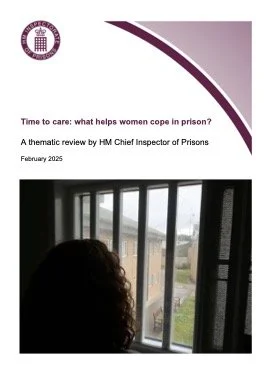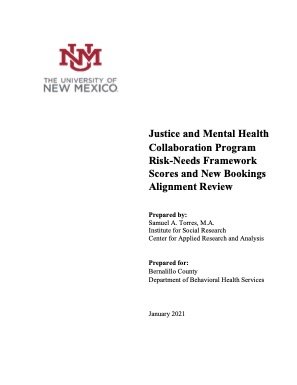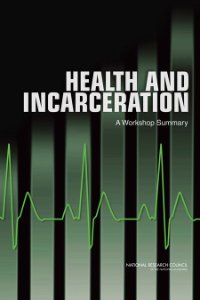By U.S. Department of Justice Civil Rights Division; U.S. Attorney’s Office for the Northern District of Georgia
In September 2022, Lashawn Thompson died alone in a filthy cell in the mental health unit of the Fulton County Jail. Mr. Thompson, who had a history of mental illness and was unhoused, was accused of spitting at a Georgia Tech police officer and arrested on a simple battery charge, then held on an old warrant. Three months after his arrest, Mr. Thompson was found in his cell, slumped over with his head on his toilet. A medical examiner reported that his malnourished body was infested with an “enormous presence of body lice,” and concluded that he was “neglected to death.” There was widespread reporting and outrage about the conditions that led to Mr. Thompson’s death. But there was another death on the mental health unit—several months before Mr. Thompson’s—that never made the news. An unhoused man with serious mental illness was arrested and held in Fulton County Jail’s mental health unit after breaking into a building to seek shelter and warmth. On the mental health unit he stopped taking his medications, and his health declined. He was found unresponsive following a likely seizure and was transported to an outside hospital for care, but never recovered. He died in hospice a month later. Two more people died in the Jail’s mental health unit in the weeks following Mr. Thompson’s death. Both men had serious mental health needs; one had a developmental disability. Both were killed by their cellmates, and both were found with their feet bound. One of them was wrapped up in bedding “like a mummy.” Altogether, these four Black men with serious mental health needs died in the Jail’s mental health unit in under a year. In July 2023, we opened a civil rights investigation into conditions in the Fulton County Jail under the Civil Rights of Institutionalized Persons Act (CRIPA), 42 U.S.C. § 1997, the Americans with Disabilities Act (ADA), 42 U.S.C. § 12132, and the Violent Crime Control and Law Enforcement Act, 34 U.S.C. § 12601. Within weeks of opening our investigation, six more Black men had died in the Jail. One person was found unresponsive in his cell after his cellmate strangled him. And days later, tensions in the Jail erupted in violence: within 24 hours, five units in the Jail saw violent assaults, at least seven people were stabbed, and one person was killed. After an extensive investigation, we find reasonable cause to believe that Fulton County and the Fulton County Sheriff’s Office violate the constitutional and statutory rights of people incarcerated in the Fulton County Jail. Fulton County Jail fails to adequately protect incarcerated people from the substantial risk of serious harm from violence, including homicides and stabbings by other incarcerated people. Serious violence has harmed people with mental health needs and other vulnerable populations. Assaults are carried out with weapons fashioned from Jail fixtures and are made possible by physical deficiencies in the Jail environment, such as unlocked doors. The Jail has long had inadequate practices for reporting and responding appropriately to sexual violence. Poor supervision, poor classification practices, and inattention to the maintenance of the Jail are major contributors to the unacceptable violence. Fulton County Jail deputies and detention officers use force against incarcerated people without adequate justification. This includes a practice of deploying Tasers against incarcerated people without reasonable cause. Understaffing in the facility contributes to the excessive use of force, as do poor policies, training, and the failure of supervisors to identify, correct, and discipline officers. Fulton County Jail living conditions do not meet basic constitutional standards. The Jail has allowed housing areas to fall into a state of serious disrepair, with standing water collecting in living areas, exposed wires, pests poorly controlled, and deficient services for providing clean clothing and sheets. These conditions are dangerous and unsanitary. Meals are served to the incarcerated population in an unsanitary manner and do not meet nutritional standards. As a result, people in the Jail have suffered harms from pest infestation and malnourishment. Medical and mental health care in the Fulton County Jail do not meet constitutional standards. The Jail impedes access to medical and mental health care through a lack of security staff. Medication administration gaps lead to medical and mental health complications and injuries. When medical emergencies occur, the Jail fails to provide appropriate medical care. And although people with mental health needs are overrepresented in the Jail population, the Jail environment exacerbates symptoms of mental illness. The Jail does not adequately protect people from a risk of suicide and does not adequately treat serious mental health needs. Restrictive housing conditions in the Jail pose a substantial risk of harm, including acute mental illness and self-injury, and restrictive housing practices are discriminatory and unlawful. The Jail places people in isolation without adequate monitoring for decompensation. Restrictive housing placement processes discriminate against people with mental health disabilities in violation of the ADA. Jail officers punish people with long terms in restrictive housing without adequate due process protections. Georgia is one of only four states where the juvenile justice system’s jurisdiction ends at 16. There are 17-year-old boys and girls at the Jail, many of whom spend over a year in custody. These children are subjected to violence and excessive force, experience sexual abuse, and are denied adequate mental health care. The Jail’s use of restrictive housing uniquely harms these children because they are psychologically different from adults, making their time in isolation much more damaging, exacerbating the onset of mental illness, increasing the risk of suicide, and causing long-lasting trauma. The Jail also fails to provide special education services to 17-year-old boys and girls who are entitled to them, in violation of the Individuals with Disabilities Education Act (IDEA), 20 U.S.C. §§ 1400–1482. None of these problems are new. And despite widespread awareness of these issues, the unconstitutional and illegal conditions have persisted. Vulnerable populations— including children, those who are gay or transgender, people with medical and mental health needs, and others—often bear the brunt of these conditions. Deaths and other harms have continued. In April 2024, an incarcerated person died in the Jail after being stabbed 20 times. Less than a week later, a man was found dead in his cell, likely hours after his death. The report that follows explains the scope of our investigation and provides background information about the Jail. The report describes the constitutional and statutory violations that we found in the Jail, including the legal framework applied, the unacceptable conditions identified, and the deficient practices that led to the problems. We end by identifying changes that need to be implemented to fix the violations and prevent further harms.
Washington, DC: U.S. Department of Justice, 2024. 105p.






















